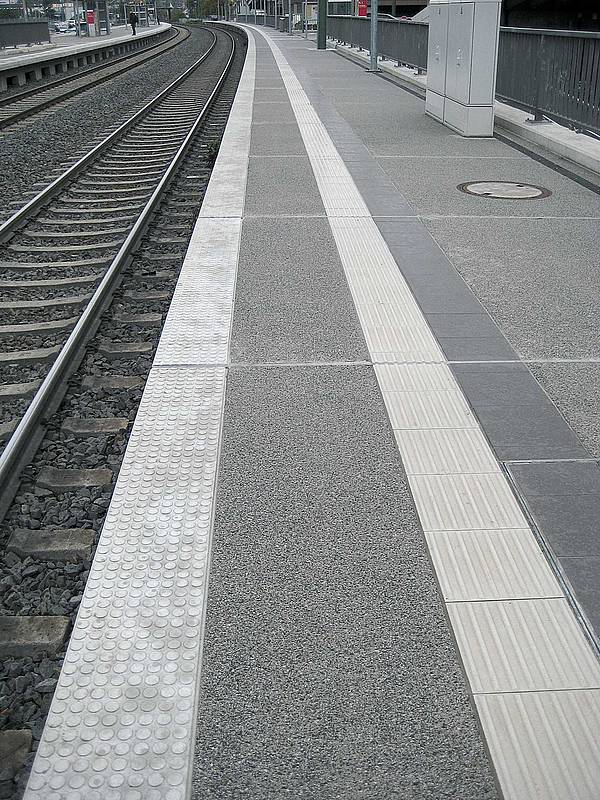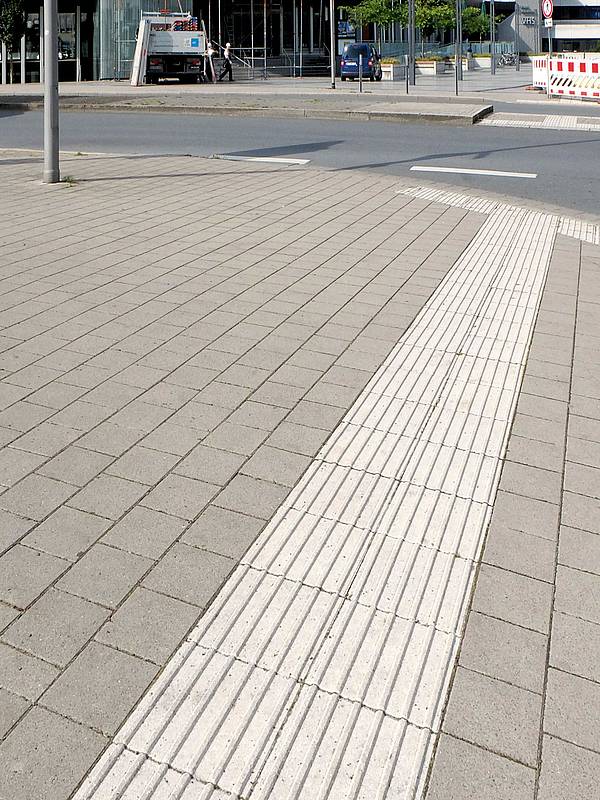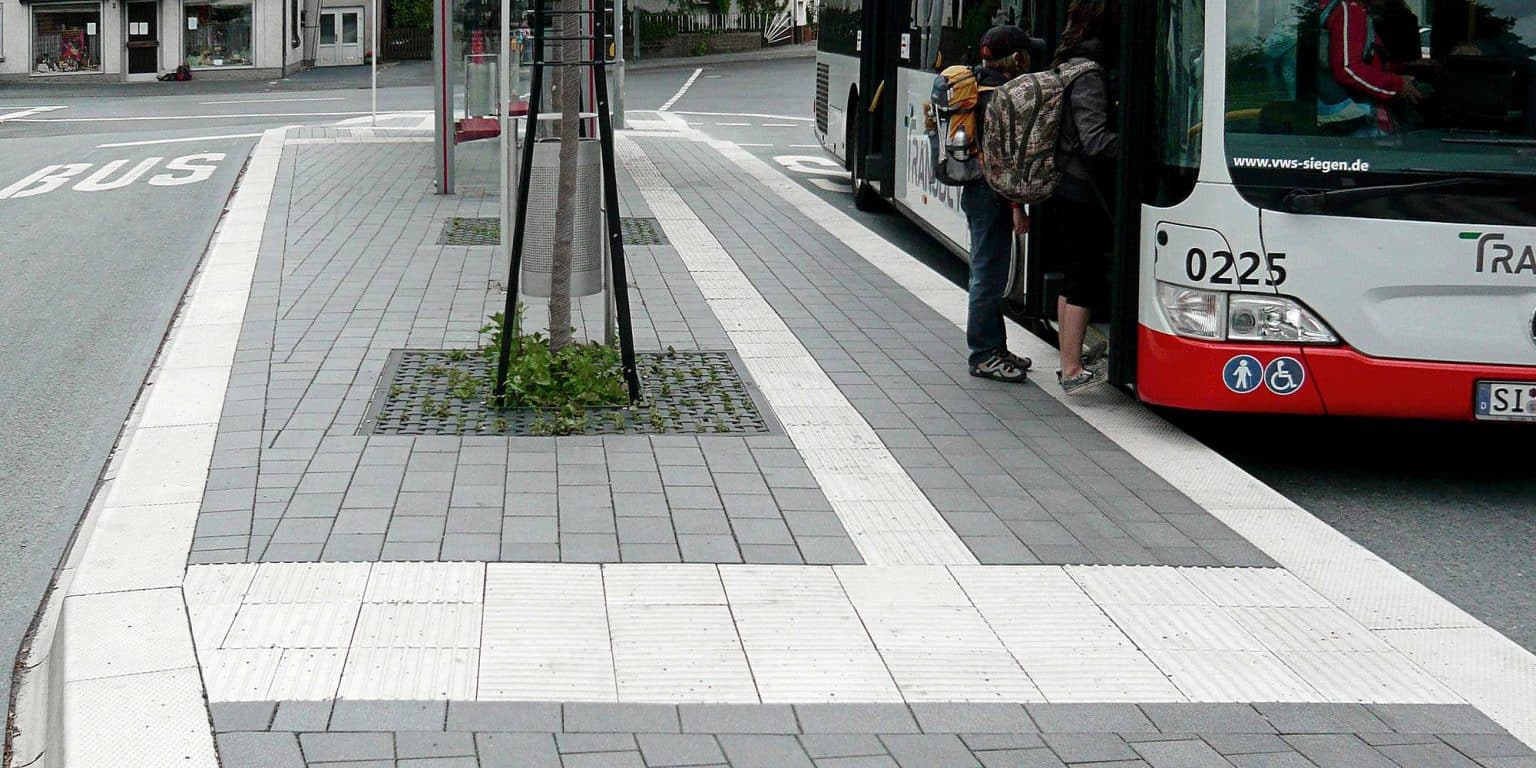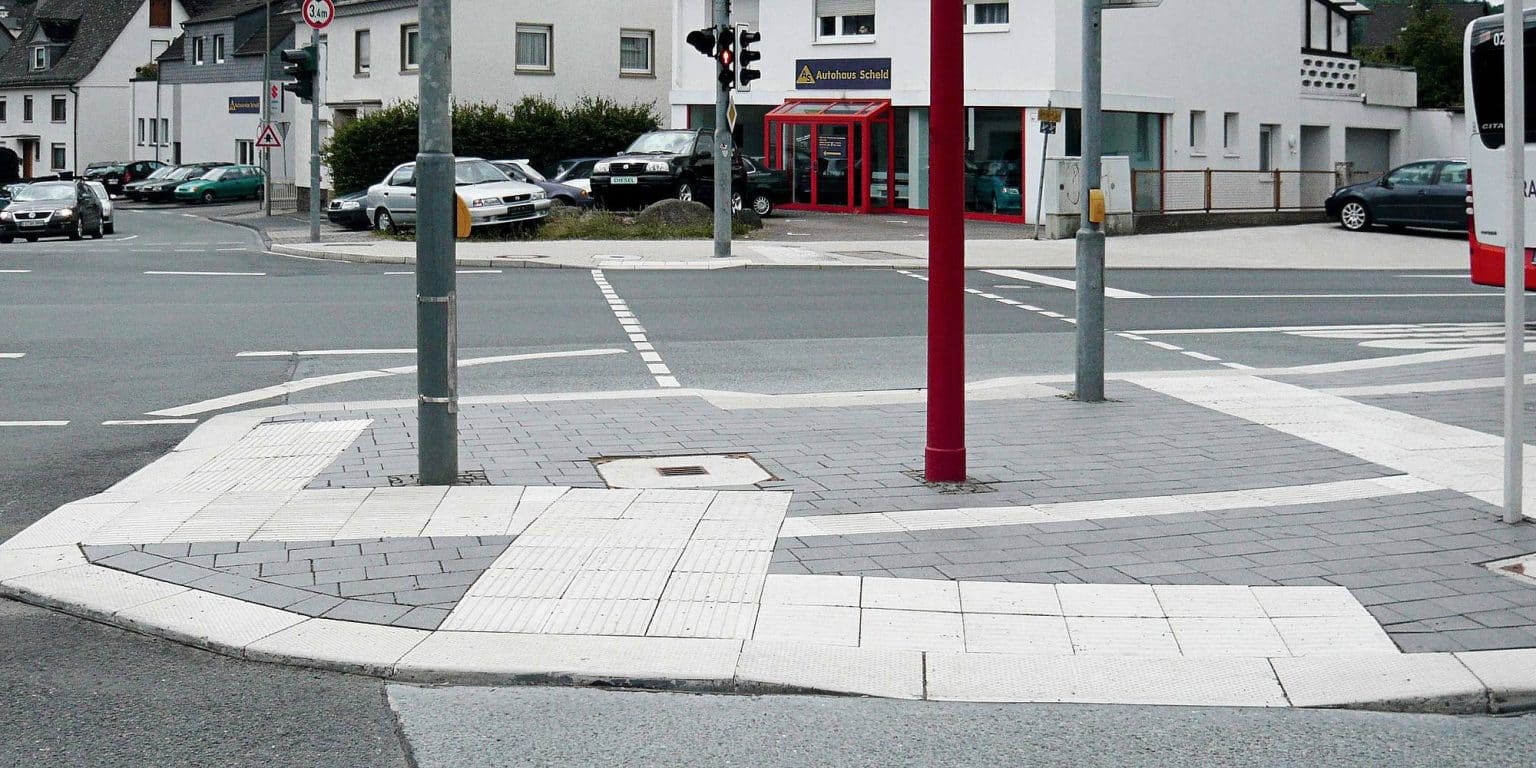
Stories
Helpers in the city
Accessible mobility on streets and roads is of obvious benefit to blind or physically disabled people. Special guiding systems on the ground can help people to orientate themselves on the pavement, and to move independently.
Just think about your morning commute: you board the train from a packed platform. You get off at your usual stop, leave the platform and then cross the street to get to work.
Now imagine you were doing all of that blind. Or in a wheelchair.
When your mobility or senses are limited, using roads and pavements can be a real challenge. In order to give physically disabled people the chance to safely and independently use streets, pavements and stations, they need helpers in the city.
According to estimations from the World Health Organization in 2010, around 1.2 million people in Germany are blind or visually impaired. They need tactile ground surface indicators: tactile guides and warning markings.

Guides and warning markings
This guidance system originated in Japan, where a textured flooring was developed in 1967 that blind people could touch with their cane or feet. The system was first used in Germany in the 80s, and has been constantly developed and standardized since then. Germany is definitely not yet completely accessible, but these flooring systems are increasingly being integrated into pavements.
“Demand for ground surface indicators has increased rapidly in the last few years,” said Lars Schaubhut, Head of Sales and Authorized Representative for Profilbeton. This Hessian supplier has been manufacturing products to help disabled people use streets and pavements for more than twenty years.
>For the visually impaired, this consists of flooring with bars and studs. Bar patterns function as guides that could indicate direction, crosswalks, directions to destinations to one side, and boarding areas for public transport stops. Studs can be used as warnings to signal “Stop” or “Watch out” to the user, and to indicate hazards such as obstacles, a change of level or unsafe crossings, such as on a road.

Tactile and acoustic contrasts to their surroundings
These ground surface indicators can be read using feet or a cane. Visually impaired people learn various reading techniques, such as the tapping technique, where the cane is moved in a specific rhythm to feel the ground, or the rolling method, where the cane is rolled around the path. By moving the cane across the studs or bars, they stand out both tactually and acoustically from their surroundings, so the information is received.
Physically disabled people need as few changes in level as possible in streets and pavements. Curbs, steps and stairs are real problems, especially when using public transport. Even if curbs are level, there is usually a step to get onto the bus. Bus drivers have to park especially close to the curb and run the risk of damaging their tires.
The new ICE Train Station in Kassel was confronted with these challenges. The operators wanted a completely accessible but also tire-safe solution. Transport operator employee and engineer Wolfgang Hasch developed the special curb known as the “Kassel Special Curb”: this curb was created with the help of RECKLI forms and was based on a self-steering concept that leads the bus close to the curb. Even if the bus approaches the curb at an angle, the indentation guides the tires into the right position. The curbs and concrete are designed to prevent damage to the bus tires.
Cooperation with associations for the blind and wheelchair users
Hasch patented this invention, and founded the company Profilbeton. When working on the conception of new products, Profilbeton works closely with associations for disabled people. “Our new curb, the Kassel Special Curb Plus, was tested and developed in close cooperation with the Swiss specialists BÖV (Accessible Public Transport),” said Schaubhut. A test stop was also built on the Hamburg transport authority land, where the curb was tested with different types of wheelchairs.
When developing crossing curbs, the company cooperated with associations for the blind and wheelchair users at the same time, in order to guarantee usability for both groups: the flooring system notifies blind people of a street crossing, while also being safely accessible for wheelchair users.
These Hessian curbs have even made it as far as Africa: Profilbeton sent its products to Cape Town in 2010 for the Soccer World Cup. “There have been several licensees in South Africa for a while,” said Schaubhut. These curbs are now being used in the country that first developed this guidance system: Okayama City in Japan recently put a test stop into operation on the university campus.



